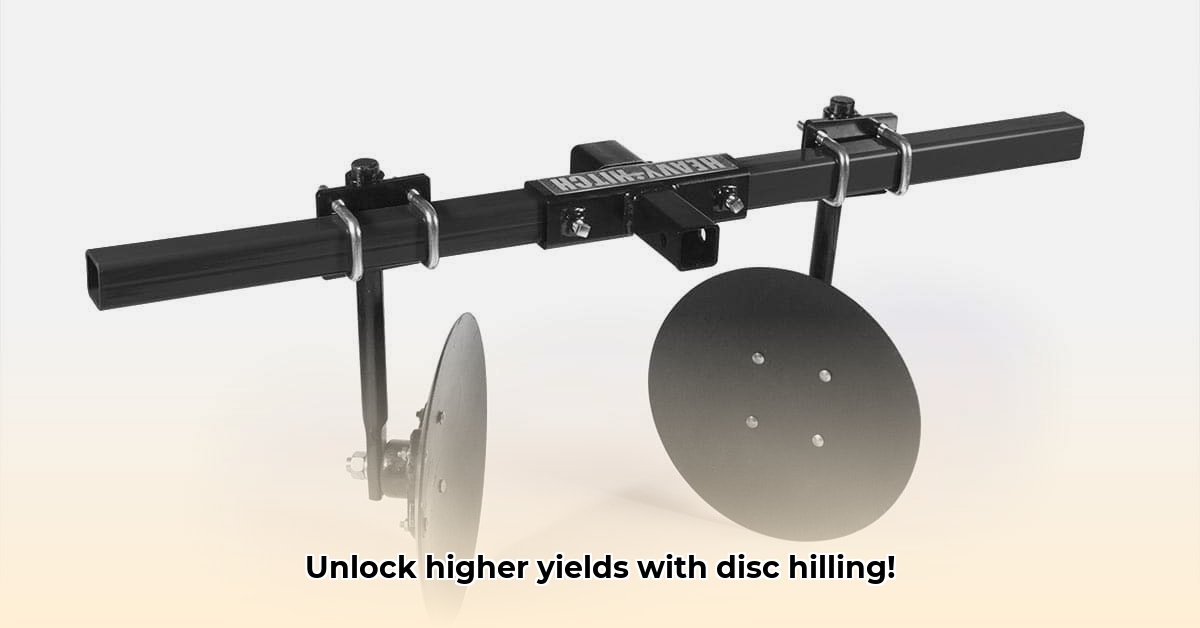
Sustainable agriculture hinges on effective soil management, and disc hillers offer a powerful tool for achieving optimal soil health and maximizing crop yields. This guide provides a practical, step-by-step approach to selecting, using, and maintaining disc hillers for enhanced farming practices. For more information on tractor supply, check out this helpful resource: Tractor Supply Seeds.
Choosing the Right Disc Hiller
Selecting the appropriate disc hiller depends on several factors, primarily your soil type and the scale of your operation. Different soil types require different levels of power and tillage intensity. For example, heavy clay soils need a more robust disc hiller than lighter, sandy soils. The number of discs also influences efficiency; more discs generally mean wider coverage but also increased weight and power requirements.
This table summarizes recommended specifications:
| Soil Type | Recommended Disc Width (inches) | Number of Discs | Typical Tractor HP Requirement | Notes |
|---|---|---|---|---|
| Light, Sandy Soil | 10-15 | 2-4 | 15-25 | Easy to work with, fast tilling |
| Medium Loam | 15-20 | 4-6 | 25-40 | Versatile, good for many crops |
| Heavy Clay Soil | 18-24 | 6-8 | 35-50 | Requires more power, might need multiple passes |
Consider factors beyond soil type: budget, the slope of your land, and the types of crops you grow all play a role. A soil test provides valuable insights into its composition, informing your choice.
Ground Preparation and Setup
Before using a disc hiller, clear the field of debris (rocks, sticks, etc.) to prevent equipment damage. Pre-ground preparation practices vary; some farmers prefer thorough tilling, while others advocate for minimal disturbance to preserve soil structure. The optimal approach depends on your specific context and experimentation.
Step-by-step setup:
- Inspection: Thoroughly inspect for damage; tighten loose bolts and nuts.
- Attachment: Securely attach the disc hiller to your tractor, following manufacturer instructions.
- Depth Adjustment: Adjust the depth to match your soil type and desired raised bed height. Start shallow and adjust gradually.
- First Pass: Begin at a slow speed, making multiple passes if needed, closely monitoring soil response.
- Continuous Monitoring: Observe soil conditions throughout; adjust depth and speed accordingly.
Optimal Use and Techniques
Creating uniform raised beds requires practice. Adjust the disc depth and spacing to suit your field's conditions. Harder soils may need multiple passes. Remember these safety precautions:
- Wear safety glasses and sturdy boots.
- Operate the disc hiller only when others are at a safe distance.
- Be aware of surroundings and potential hazards.
Maintenance and Troubleshooting
Regular maintenance extends your disc hiller's lifespan. After each use, inspect for damage or wear. Lubricate moving parts and replace dull blades promptly. Addressing minor issues prevents larger problems.
- Lubrication: Regularly lubricate moving parts to prevent excessive wear.
- Inspection: Check for worn-out components regularly.
- Blade Sharpening/Replacement: Dull blades significantly reduce efficiency and can damage the machine.
Long-Term Impacts and Considerations
Disc hillers offer numerous long-term benefits, including improved soil drainage and aeration, leading to healthier plant roots and potentially reduced need for water and fertilizers. However, more research is needed to fully understand the long-term impact on soil structure, erosion control, and overall soil health.
A Simplified Risk Assessment Matrix
| Risk Factor | Mitigation | Potential Outcome |
|---|---|---|
| Incorrect Disc Adjustment | Careful adjustment, multiple test passes | Uneven beds, poor drainage |
| Equipment Failure | Regular maintenance, timely repairs | Equipment damage, downtime |
| Soil Erosion | Proper soil management, cover crops | Loss of topsoil |
| Operator Error (Safety) | Following safety guidelines, proper training | Injury or equipment damage |
Conclusion
Disc hillers are invaluable tools for sustainable agriculture, leading to improved soil health and increased yields. Experiment, observe, and adapt your techniques to your specific circumstances. The journey towards sustainable farming is continuous, and your contributions can shape its future.